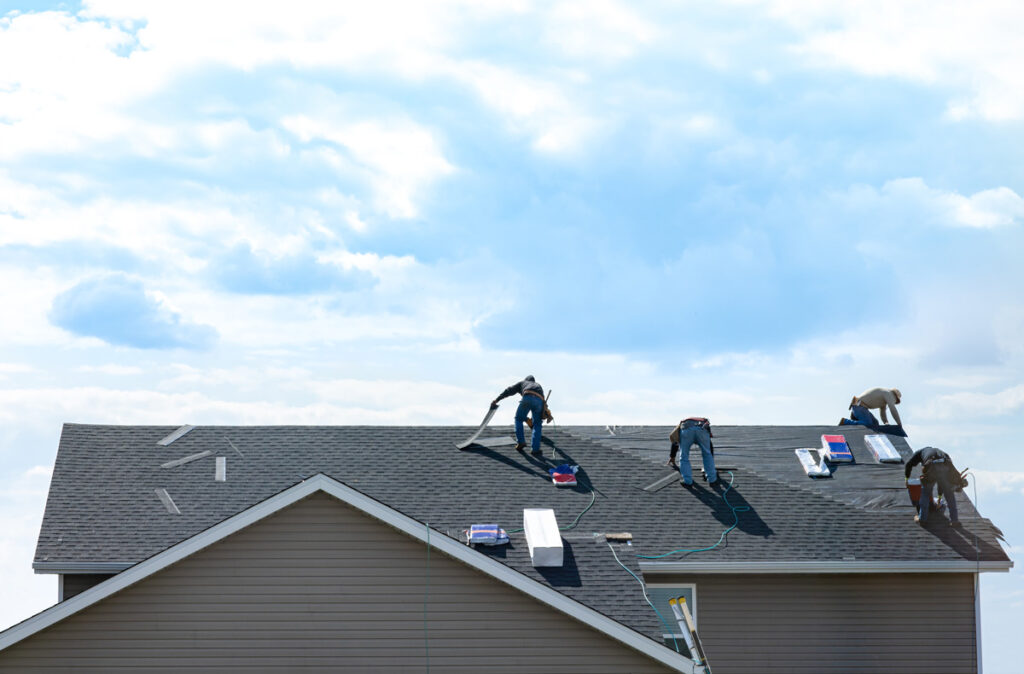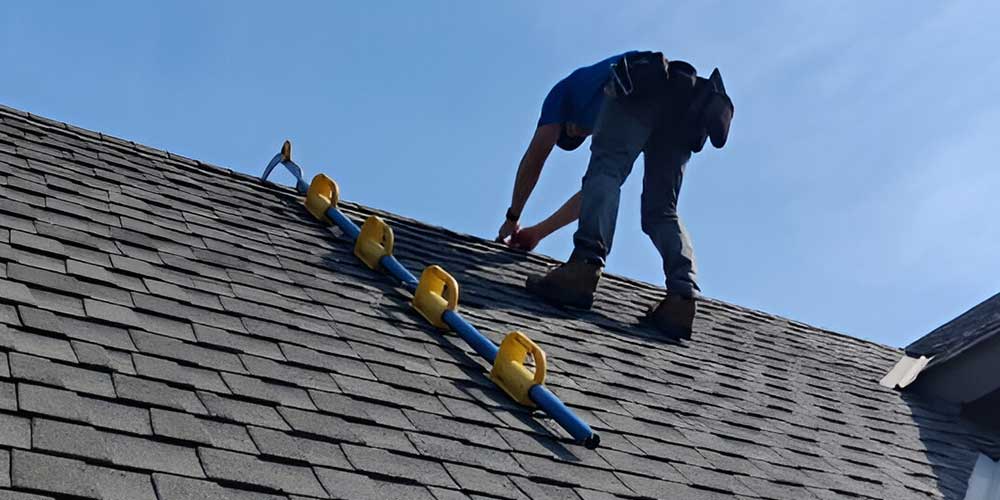Roof Repair Oahu: Professional Roof Repair Works for Lasting Defense
Roof Repair Oahu: Professional Roof Repair Works for Lasting Defense
Blog Article
Recognizing the Different Sorts Of Roofing Systems: A Comprehensive Overview for Homeowners
In the realm of homeownership, selecting the appropriate roof covering style is a choice that carries significant effects for both functionality and visual appeal. With a selection of alternatives-- ranging from the traditional gable to the contemporary flat-- each kind provides one-of-a-kind benefits and obstacles that need to straighten with the homeowner's ecological considerations and details needs. Understanding these differences not just help in making an enlightened option however likewise influences long-term upkeep and power efficiency. As we discover the ins and outs of various roofing system kinds, it becomes apparent that one dimension does not fit all; the appropriate selection may stun you.
Gable Roof Coverings
Gable roofings, identified by their triangular shape, are among one of the most popular roof designs due to their simplicity and effectiveness in losing water and snow. This design features 2 sloping sides that fulfill at a ridge, permitting reliable drainage and lessening the risk of water build-up. The steep pitch generally connected with gable roofs improves their capacity to manage heavy precipitation, making them ideal for numerous climates.
Along with their functional benefits, saddleback roofs supply aesthetic adaptability. They can be adapted to different building styles, from standard to modern-day homes. The design can additionally fit extra features such as dormer home windows, which boost all-natural light and ventilation in the attic room room.
Additionally, gable roofings supply ample room for insulation, adding to power efficiency. Homeowners can select from a variety of roofing products, including asphalt shingles, steel, and tiles, further boosting customization choices.
In spite of their benefits, saddleback roofs may call for added support in locations vulnerable to high winds or hefty snowfall. Overall, the saddleback roof stays a preferred option because of its mix of capability, toughness, and aesthetic appeal.
Flat Roofs
Level roofing systems are often acknowledged for their minimal layout and functional applications, specifically in industrial and commercial setups (oahu roofing). These roof coverings include a straight or almost horizontal surface, which permits simple building and versatile space utilization. While they might lack the aesthetic appeal of pitched roof coverings, flat roofing systems use countless advantages, particularly in metropolitan atmospheres where maximizing room is crucial
Among the main advantages of level roof coverings is their accessibility. Property owners can utilize the roof space for various purposes, such as roof gardens, terraces, or photovoltaic panel installations. In addition, flat roofings are generally extra economical to preserve and mount compared to their sloped equivalents, as they require less materials and labor.
However, flat roofings do existing certain obstacles. Proper water drainage is vital to stop water merging, which can result in leakages and structural damage. For this reason, choosing high-quality waterproofing materials and regular inspections are important for making certain durability. Usual products used for flat roofs consist of built-up roof covering (BUR), modified bitumen, and single-ply membranes, each offering unique advantages. In general, flat roof coverings function as a versatile and useful choice for many property owners and services alike.
Hip Roofing Systems
Hip roofs are characterized by their sloped sides that converge on top, creating a ridge. This layout stands out from saddleback roofs, as all four sides of a hip roofing system slope downwards towards the walls, providing a more secure framework. The angle of the slopes can vary, permitting for versatility in building aesthetics and capability.
Among the primary advantages of hip roofs is their capacity to stand up to heavy winds and adverse climate condition. The sloped surface areas enable far better water drain, reducing the threat of leakages and water damage. In addition, hip roofings offer enhanced attic room space, which can be made use of for storage space or even transformed into livable areas.
However, creating a hip roof can be extra costly and complex than easier roofing system kinds, such as gable roofings. The extra product and labor included in important site developing the slopes and ensuring correct structural honesty can result in greater expenses. Regardless of these disadvantages, many home owners favor hip roofings for their sturdiness, visual charm, and possibility for energy effectiveness.
Mansard Roofs
Mansard roofing systems, frequently identified by their unique four-sided style, attribute 2 slopes on each side, with the reduced slope being steeper than the upper. This building design, stemming from France in the 17th century, is not only cosmetically enticing but practical, as it takes full advantage of the useful area in the upper floorings of a structure. The high reduced incline permits more headroom, making it an excellent choice for attic rooms or lofts, which can be transformed right into living areas.
Mansard roof coverings are identified by their adaptability, accommodating different building styles, from typical to contemporary. They can be created with various products, consisting of asphalt tiles, slate, or steel, offering home owners with a variety of alternatives to match their choices and spending plans. Additionally, the design allows for the integration of dormer windows, enhancing natural light and ventilation in the top degrees.
Nonetheless, it is important to think about the potential drawbacks. Mansard roof coverings might need more maintenance as a result of the complexity of their design, and their high slopes can be challenging for snow and click here for more info rain runoff. On the whole, mansard roofings incorporate elegance with functionality, making them a prominent choice among home owners looking for distinctive building attributes.
Lost Roofs
As property owners progressively seek simpleness and functionality in their building designs, lost roof coverings have become a prominent choice. Defined by a single sloping plane, a shed roof covering provides a minimalist aesthetic that enhances different home designs, from modern to rustic.
One of the main benefits of a shed roof is its uncomplicated construction, which often converts to lower labor and product costs. This style allows for efficient water drain, reducing the risk of leakages and water damage. Additionally, the vertical slope provides adequate area for skylights, improving all-natural light within the interior.
Dropped roof coverings likewise supply adaptability in terms of usage. They can be properly integrated right into enhancements, garages, or outdoor frameworks like sheds and structures. Additionally, this roof covering style can accommodate various roofing materials, consisting of steel, asphalt shingles, and even environment-friendly roof coverings, aligning with eco-friendly efforts.
However, it is important to consider local climate problems, as hefty snow tons may require adjustments to the roofing's angle or framework. Generally, lost roofs provide a practical and cosmetically pleasing choice for property owners aiming to optimize functionality without endangering design.
Verdict


Gable roof coverings, identified by their triangular shape, are among the most prominent roofing styles due to their simpleness and efficiency in shedding water and snow. oahu roofing. The steep pitch generally connected with gable roof coverings improves their capacity to take care of heavy precipitation, making them ideal for different climates
While they might do not have the visual charm of pitched roofs, level roof coverings provide many benefits, specifically in city atmospheres where maximizing area is important.

Report this page